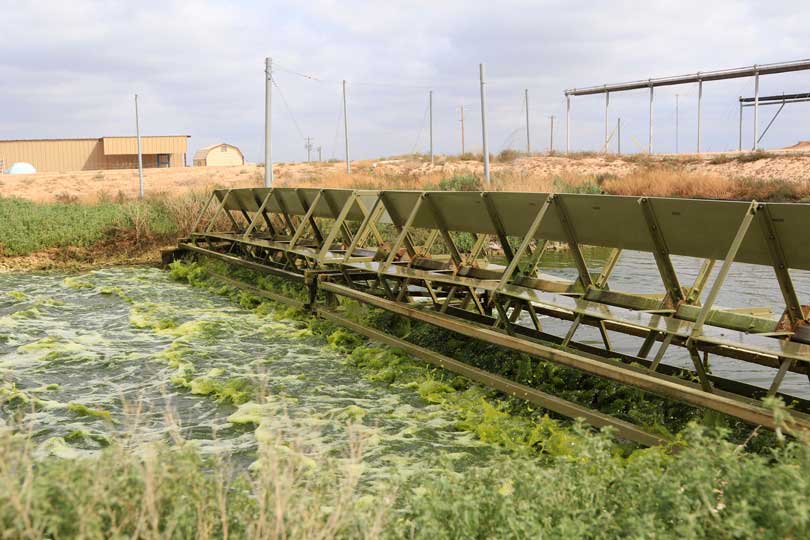By Jennifer Dorsett and Ed Wolff
Out in West Texas, something green is growing. It’s not a traditional crop, though. It’s algae. And it’s for use in nutritional supplements.
Bart Reid is a former shrimp and redfish farmer from Imperial. But when prices fell too low on farmed shrimp to turn a profit, Reid turned to other ideas.
West Texas is abundant in three things vital for growing algae: brackish water, clay-based soil and many days with warm temperatures and plenty of sunlight.
Reid started farming algae under a federal biofuels grant program. He later teamed up with Qualitas Health, a Texas-based algae-ingredient supplier, to grow algae as a nutritional source.
And growing algae is similar to growing traditional crops.
“In any agricultural operation, you have certain testing,” Reid said. “You need to know your nutrient levels in your soil. You need to know what kind of soil you have. You need to check your plant, how much biomass you have. You need to know what your pest problems are.”
It’s the same on Reid’s algae farm, except algae grows faster than other crops, so testing has to be performed on-site every day.
Once the algae has reached a high enough density in the ponds, it can be harvested every day.
The team at Qualitas Health thinks of it like growing cotton. They plant. They take care of their crop. They harvest. But where a cotton farmer will only get one crop a year, Reid’s crew is harvesting every day. All year long.
“We plant once. We harvest many times. From that harvest we make totes, that’s our equivalent of modules. That goes to our extraction facility, which is the equivalent of our gin,” Rebecca White, vice president of Operations at Qualitas Health, said. “Then we separate the algae into its pieces—the oils, the protein, the fiber, just like the fiber from cotton and the cottonseed. It’s just exactly like that.”
White said the extraction facility is like the cotton gin, with no part of the harvest wasted. Omega-3 oils are extracted and refined into supplements, and the remaining high-protein material is something the company hopes to soon develop into a protein supplement.
“We’re not trying to replace anything,” White said. “Because algae is a water-based plant and not a land-based plant, we don’t need the arable land to grow. We can take land in the middle of the Permian Basin, which doesn’t grow much more than mesquite, and turn it into a very large algae farm.”
It’s not only rich in Omega-3s but Omega-7s, 9s and 6s. Plus it’s a good source of protein. The particular type they grow is called nannochloropsis, or nanno for short. It’s photosynthetic—grown with sunlight and carbon dioxide.
It takes about 10 days from planting to grow enough for harvest. Then, it can be ready to harvest again in as little as three days. Currently, it’s used to make a line of Omega-3 supplements. In the future, the company hopes to produce another product, protein. It’s not meant to be eaten on its own but added as ingredients in other food to help boost nutrition.
“There is a dye from spirulina, which is another type of algae that’s farmed in open ponds like we do. It’s the only natural blue dye that’s available. If you like M&Ms and you’re eating blue M&Ms, you’re eating a product from algae,” White said.
Algae is unique, no doubt. But at the heart of every pond is a farmer growing a crop, immersed in agriculture and making a difference at the dinner table.

